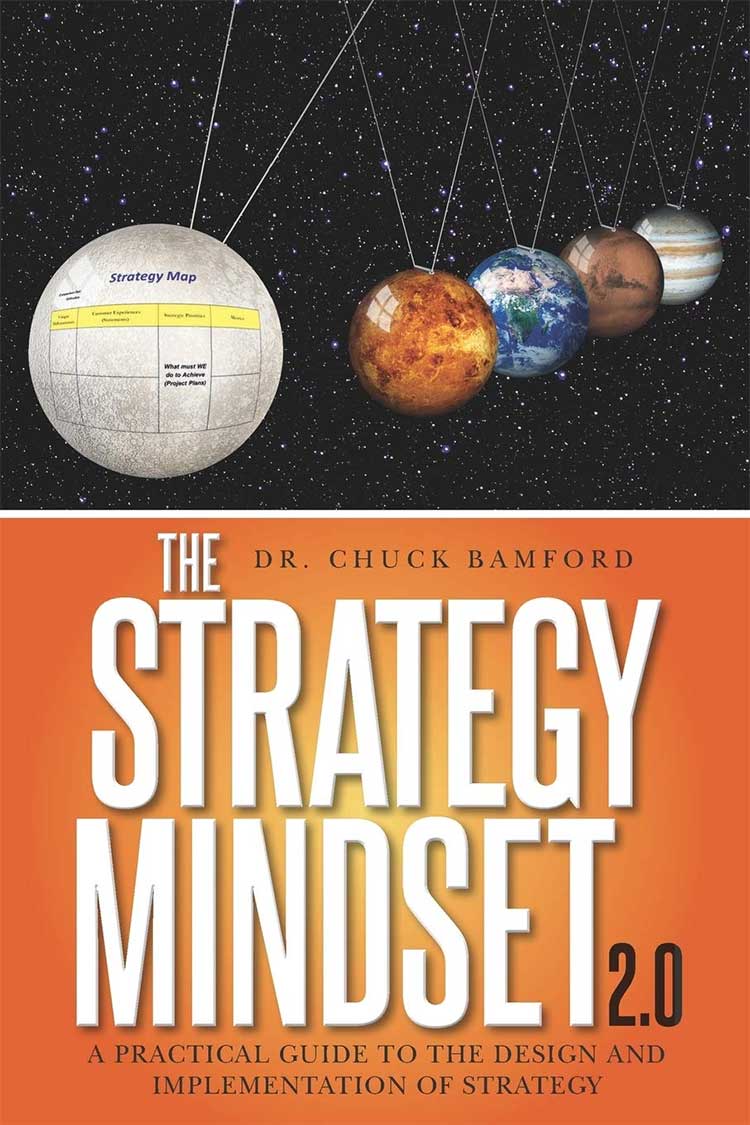When Should You Consider a Change in Your Business Strategy?

Somewhere along the way strategic planning became inexorably linked to the concept of time. The thinking became: If tactical plans are short-term, then strategic plans must be long-term. Strategic plans were expected to be updated — or even completely revamped — on an annual basis. The key elements were to lay out three-to-five-year goals and then set the company forward to achieve those goals. What quickly happened was that these annual rituals devolved into budget forecasts and bonus bludgeons that had little to do with the reason customers buy from the company.
Organizations pour substantial time, money and management firepower into crafting a strategy. That strategy should provide clarity in two areas: The first is bringing the “table stakes” — the orthodox expectations of customers and employees — of the business up to median. Most of what’s done on most days at most organizations is simply the table stakes expectations of customers or employees. It’s the blocking and tackling (sorry for the football image) that’s the very reason any customer considers buying from your company.
The second element is the effort to consistently deliver on several true competitive advantages. These are the features that not only separate your organization from its competitors, but that the organization can hold onto long enough to make real returns. These competitive advantages are what make your customers go past your competitors and buy from you — preferably at a higher price, but just getting them to come to you is a win.
Strategy implementation is about driving these two elements as far and as long as you can. The more consistent you are with your employees and your customers, the more you will reap the rewards of a solid strategy.
That said, strategy is not stagnant and it must evolve. The real question is: When should you consider changing your strategy? The need to re-evaluate your strategy is generally driven by four factors:
- Competitors. If one or more of your competitors have closed the gap on one of your true competitive advantages, your customers may struggle to see your advantage. This is actually the fundamental nature of business. Competitors are always looking to gain an advantage, and one method is to take away another’s competitive advantage. A company might have been an industry leader in a particular area and the leadership simply cannot understand why customers won’t continue to reward them for that initial leadership after the competitors catch up.
Another way that a competitor can cause a re-evaluation of strategy is when a new competitor enters the market in a disruptive way. - Regulators. A significant change in the regulatory environment can impact one of your competitive advantages. Regulatory changes often affect an entire industry. They can level the competitive field in a way that customers are no longer incentivized by your advantages.
- Technology. A significant technological change can impact the cost, development and/or delivery of your product, service or offering. Technological moves from outside the traditional industry can cause a wave of change in consumer behavior.
- Socio-environmental.
Significant changes in the direction of society in the form of activism can have profound impacts on the strategy of the firm. Examples include nationalism moves that make formerly accepted practices obsolete; eco-activism that impacts how products are produced or crops are grown; the #MeToo movement that brought hidden practices of organizations to light and caused substantial changes in their business practices.
A solid strategy approach is to constantly monitor these four aspects of the environment, looking for changes that could impact the organization’s strategy. This involves developing trigger metrics to indicate when those changes have the potential to impact your business strategy. Additionally, it’s important to examine the organization’s current competitive advantages and determine if they’re still valid. If so, then keep the focus of all employees on the consistent delivery of the strategy. But if these external changes appear to have an impact on what constitutes the organization’s competitive advantages, then it’s time to re-examine and perhaps re-craft the strategy of the organization.
As a rule, strategy should remain in place as long as possible.
Have you read?
Most Prosperous Cities In The World For 2019.
Safest Destinations For Women To Travel In Asia, 2019.
The Top 30 Women-Friendly Travel Destinations In The World For 2019.
Ranked: The World’s Best Cities For Food Lovers In 2019.
The World’s Top 10 Biggest Military Spenders In 100 Years (From 1914 to 2018).
Add CEOWORLD magazine to your Google News feed.
Follow CEOWORLD magazine headlines on: Google News, LinkedIn, Twitter, and Facebook.
This report/news/ranking/statistics has been prepared only for general guidance on matters of interest and does not constitute professional advice. You should not act upon the information contained in this publication without obtaining specific professional advice. No representation or warranty (express or implied) is given as to the accuracy or completeness of the information contained in this publication, and, to the extent permitted by law, CEOWORLD magazine does not accept or assume any liability, responsibility or duty of care for any consequences of you or anyone else acting, or refraining to act, in reliance on the information contained in this publication or for any decision based on it.
Copyright 2024 The CEOWORLD magazine. All rights reserved. This material (and any extract from it) must not be copied, redistributed or placed on any website, without CEOWORLD magazine' prior written consent. For media queries, please contact: info@ceoworld.biz
SUBSCRIBE NEWSLETTER









